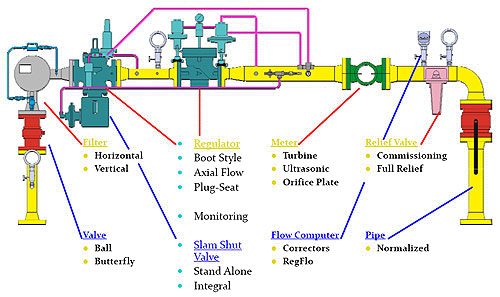Hi,
We have a compressor station where the process vent gas is 1000 normal m3 for each stop. This gas quantity is now released into the atmosphere. The total number of venting actions is about 20-60 per year.
If we inject this quantity into a lower pressure network (city distribution network) that passes near the compressor station, we could reduce the methane emissions.
The typical pressure of the process vent gas is 40-45 bar, and the typical city distribution network is 15 bar. The city distribution network pipe diameter is 4 in, and can easily accept a flow of 1000 Nm3/h at 15 bar.
I have googled and I have asked some of my colleagues, but I haven't found any example of a similar facility.
This facility would include pressure regulators, and possibly a valve controlled by the city distribution operator that would block the gas in case they do maintenance to the network. And a custody flow meter, if agreed upon.
Does anyone know of any similar facility?
Is there any fundamental reason that this facility is not feasible, or safe? I think not, but maybe I miss something.
This solution seems to be a low-cost, high-reliability solution. Any comments?
Thanks!
We have a compressor station where the process vent gas is 1000 normal m3 for each stop. This gas quantity is now released into the atmosphere. The total number of venting actions is about 20-60 per year.
If we inject this quantity into a lower pressure network (city distribution network) that passes near the compressor station, we could reduce the methane emissions.
The typical pressure of the process vent gas is 40-45 bar, and the typical city distribution network is 15 bar. The city distribution network pipe diameter is 4 in, and can easily accept a flow of 1000 Nm3/h at 15 bar.
I have googled and I have asked some of my colleagues, but I haven't found any example of a similar facility.
This facility would include pressure regulators, and possibly a valve controlled by the city distribution operator that would block the gas in case they do maintenance to the network. And a custody flow meter, if agreed upon.
Does anyone know of any similar facility?
Is there any fundamental reason that this facility is not feasible, or safe? I think not, but maybe I miss something.
This solution seems to be a low-cost, high-reliability solution. Any comments?
Thanks!

